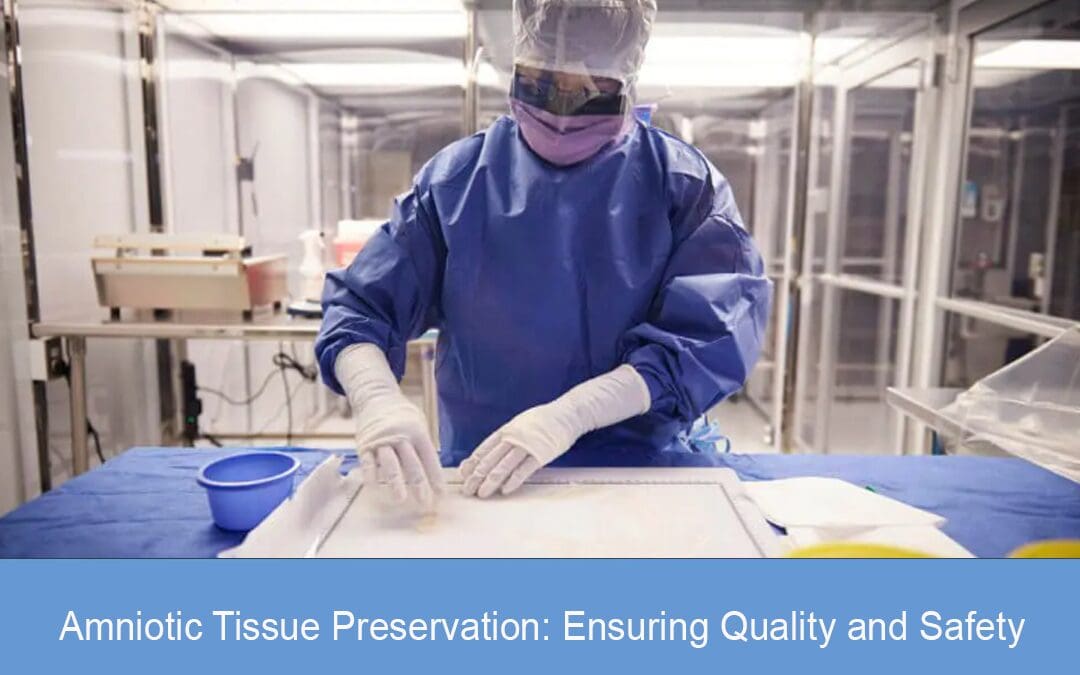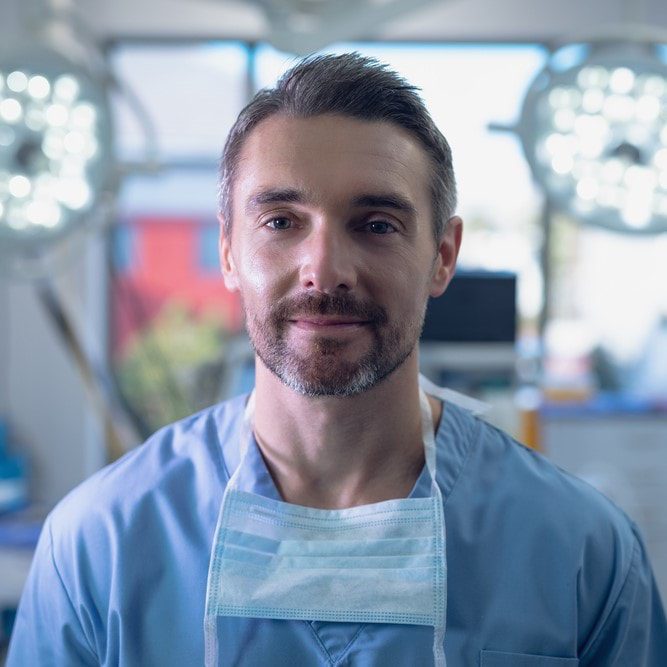Quality and safety in the process of amniotic tissue preservation is critical for many reasons. This post aims to educate readers on the importance of quality and safety in these processes and how Tides Medical meets those standards and regulations.
The Tides Medical Tissue Bank manufactures various high-quality amniotic tissue graft products. All our products comply with applicable regulations and FDA guidance and adhere to the rigorous standards of the American Association of Tissue Banks (AATB). Safety is our priority. We position ourselves to meet these high standards for safety, quality, and compliance by managing the entire process in-house, from placenta acquisition to distribution. For information on our current licensures and certifications, click here.
Why is quality and safety necessary in the amniotic tissue preservation process?
Quality and safety in amniotic tissue preservation are essential to ensure patient safety, optimize treatment efficacy, comply with regulatory standards, maintain the trust of healthcare professionals and patients, aid in long-term storage, clinical consistency, and more.
Here are a few reasons why safety is critical in the preservation process:
Patient safety: As with any medical intervention, safety comes first. Proper preservation minimizes the risk of infections and other complications in the application process with amniotic tissue grafts and other amniotic tissue products.
Efficacy of Treatment: Quality amniotic tissue preservation methods help maintain the integrity and functionality of the components necessary for the treatment’s success.
Compliance with regulatory standards: Regulatory bodies, such as the American Association of Tissue Banks (AATB) and health agencies, set specific standards for tissue preservation. Adherence to these standards is essential for regulatory compliance, ensuring that the preserved tissues meet established safety and quality criteria.
AATB Amniotic Tissue Preservation Guidelines:
The American Association of Tissue Banks (AATB) is a professional organization that sets standards and guidelines for preserving and transplanting human tissues. Below are some elements covered in policies and regulations from the AATB procedures and processes for amniotic tissue preservation. These guidelines are designed to ensure donated tissues’ safety, quality, and efficacy. Staying updated with the latest revisions and amendments is essential to guarantee compliance with the most current guidelines. Always refer to the latest versions of AATB publications for the most accurate and current information.
Donor screening and testing: Screening potential donors is essential to identify risk factors or other health concerns. Tides Medical’s LOFT division works closely with mothers and their physicians throughout the placenta donation process. An initial screening, including a blood sample, is obtained during a routine blood draw scheduled by the hospital. The results confirm or deny that the donation is safe for use.
Collection and Processing: The entire collection and processing procedure must adhere to strict aseptic techniques to minimize any risk of contamination. You can learn more about Tides Medical’s collection and processing in this previous post, “Placenta Donations Process from Acquisition to Amniotic Tissue Graft.”
Regulatory Compliance: Adherence to regulations and guidelines set forth by health authorities, such as the FDA, is crucial to ensure the safety of amniotic tissue products.
Storage Conditions: The AATB regulations include procedures for temperature control and freezing and thawing protocols to avoid damage to the tissue. Tides Medical products can be stored at room temperature for up to 5 years from the date of manufacture.
Quality Control: Batch testing is required regularly to help ensure consistency in both the quality and safety of products.
Documentation and Traceability: Proper record-keeping and chain of custody are required. Comprehensive documentation of donor information, processing steps, testing results, and storage conditions is essential for traceability and accountability.
Ethical Considerations: Procedures and regulations cover both informed consent and ethical sourcing. The Tides Medical LOFT program works directly with donors to ensure transparency about using donated tissues.
Clinical Monitoring: Post-transplant monitoring for patients who receive amniotic tissue products helps assess the effectiveness and safety of wound treatment.
Training and Education: Personnel involved in the collection, processing, and storage of amniotic tissue undergo comprehensive training to ensure competency and adherence to protocols.
Reporting Systems: Establishing a system for reporting and investigating adverse events is crucial to promptly addressing potential safety concerns.
The Tides Medical Artacleanse Process
Expert technicians perform The Artacleanse Process in our Tides Medical AATB Accredited tissue bank. Every labeled product begins with donated placental tissue from a planned C-section. From collection in the operating room to the final sterile packaging, the tissue meets the highest manufacturing safety and quality standards. At Tides, we take quality and safety very seriously.
Contact Tides today if you have any additional questions about the Tides Medical amniotic tissue preservation processes!



 Marc Stemler, Ph.D., Regional VP East Sales Region
Marc Stemler, Ph.D., Regional VP East Sales Region Mora Melican, Ph.D., VP of Operations, Research & Development
Mora Melican, Ph.D., VP of Operations, Research & Development LESA CATALON,
LESA CATALON, DAVID CASTILLE,
DAVID CASTILLE,




 Dr. Thomas E. Serena MD FACS FACHM MAPWCA
Dr. Thomas E. Serena MD FACS FACHM MAPWCA JOSH WILLETT,
JOSH WILLETT, JEFF MONTGOMERY,
JEFF MONTGOMERY, MIKE RIDDLE,
MIKE RIDDLE, BENJAMIN KIMBALL,
BENJAMIN KIMBALL, DOUG PAYNE,
DOUG PAYNE, JOE SPELL,
CEO
JOE SPELL,
CEO
